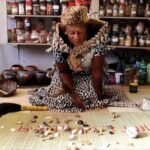Introduction: The Essence of Womanhood
Womanhood is a complex and multifaceted concept that transcends biological definitions and societal expectations. It encompasses a rich tapestry of experiences, emotions, and identities that contribute to the fundamental essence of being a woman. This journey is not solely defined by age, physical changes, or social roles; rather, it includes profound internal transformations that shape an individual’s understanding of herself and her place in the world.
In various cultures, the interpretation of womanhood varies significantly, influenced by historical contexts, cultural practices, and personal beliefs. For some, becoming a woman can signify the onset of responsibilities that include nurturing others, while for others, it symbolizes the empowerment of self-discovery and autonomy. Each woman’s journey is distinct, yet they often share underlying themes of resilience, strength, and growth. Throughout history, women have faced numerous challenges and societal constraints, yet they have continually forged paths that redefine their roles and capabilities.
As we explore the essence of womanhood, it is essential to recognize the diversity of perspectives that exist. This includes acknowledging the intersectionality of race, class, sexuality, and ability, all of which play a crucial role in shaping the experiences of women. Womanhood can be seen as a continuous process of transformation where each individual embarks on a personal journey towards self-acceptance and empowerment. The importance of introspection and emotional growth cannot be overstated, as these elements often guide women in uncovering their unique identities and fostering a sense of belonging.
This transformative guide aims to delve into these intricate layers of womanhood. By emphasizing the significance of inner reflection over traditional definitions, we invite readers to embark on their own enchanting journey of understanding what it truly means to become a woman.
Understanding Gender Identity and Expression
Gender identity and gender expression are fundamental concepts that play pivotal roles in understanding the diverse experiences of individuals in relation to gender, particularly in the transformative journey of becoming a woman. Gender identity refers to an individual’s internal sense of their own gender, which may align with the sex assigned at birth or differ from it. This personal understanding of gender can be fluid, evolving over time as one gains self-awareness and societal insights. It is crucial to acknowledge that gender identity exists on a spectrum, allowing for a myriad of identities beyond the traditional binary of male and female. Individuals may identify as transgender, non-binary, genderqueer, or other identities, each contributing to the rich tapestry of human experience.
In contrast, gender expression pertains to the external presentation of one’s gender identity. This expression encompasses various aspects, such as clothing choices, hairstyles, behavior, and communication styles, which may or may not conform to societal expectations typically associated with one’s gender identity. For example, a person who identifies as a woman may express her gender through traditionally feminine attire or may choose a more androgynous style, reflecting her unique identity.
Recognizing the difference between gender identity and gender expression is essential to understanding the complexities of gender. Celebrating diversity in gender identities and expressions fosters an inclusive environment that honors each person’s journey. For many, understanding their gender identity is a significant step in the process of becoming a woman, empowering them to express themselves authentically. Embracing this diversity not only enriches individual experiences but also enhances collective societal progress in recognizing the validity of various gender identities and expressions.
The Role of Society and Culture in Defining Womanhood
The definition of womanhood varies significantly across different societies and cultures, with each community bringing its own unique perspectives and expectations. Historical contexts have greatly influenced the portrayal of women throughout time, impacting not only social norms but also the roles women are expected to fulfill within their families and communities. In many cultures, traditional gender roles have prescribed specific responsibilities and behaviors for women, emphasizing traits such as nurturing, modesty, and compliance. These expectations have often limited opportunities for women, confining them to domestic spheres and restricting their participation in social and economic activities.
In contemporary society, however, notions of womanhood are gradually evolving. The media plays a pivotal role in shaping perceptions of what it means to be a woman, reflecting a wider array of experiences and identities. Various forms of representation, including films, literature, and advertising, showcase diverse portrayals of women, challenging outdated stereotypes and promoting the idea that womanhood encompasses a broad spectrum of roles, aspirations, and identities. This shift is essential for highlighting the importance of women’s agency, showcasing individuals who defy societal expectations in pursuit of personal fulfillment and empowerment.
Cultural traditions also significantly shape the understanding of womanhood. Practices such as rites of passage, festivals, and religious ceremonies often define pivotal moments in a woman’s life, influencing how she perceives her identity. Additionally, communal attitudes can reinforce or challenge the status quo, allowing women to find solidarity and support in their roles or encouraging them to actively resist restrictive norms. By critically examining these cultural influences, one can gain a deeper insight into the complexities of womanhood and appreciate the ongoing struggles and triumphs women face across the globe.
Magical Transformations: Myths and Mysticism
The concept of transformation has long been a captivating theme in various mythological narratives, folklore, and spiritual traditions. From the enchanting tales of metamorphosis found in fairy tales to the profound lessons embedded in ancient wisdom, these stories illuminate the often unseen forces that influence personal growth. They emphasize the belief that change is not only possible but also a natural part of one’s journey to womanhood.
Folklore is rich with narratives of transformations that symbolize deeper meanings and personal evolution. For instance, the tale of Cinderella speaks not only of external change but of the internal metamorphosis that comes from self-discovery and resilience. Such narratives can serve as powerful reminders of the belief in one’s potential to achieve greatness amidst adversity. In many traditions, the journey from girlhood to womanhood is marked by significant rites of passage. These rites are steeped in mysticism, representing both the physical and spiritual transformations that signal the threshold into a new phase of life.
Moreover, the practice of spellcraft and ritual is often intertwined with the narrative of transformation. Women throughout history have harnessed the power of belief in magic to enact change in their lives, whether through symbols, incantations, or community practices. The idea that personal belief can catalyze transformation is prevalent in many cultures, where the mere act of envisioning change is considered a vital first step. These magical elements are not just fanciful; they represent a tangible connection to the energy and attributes associated with being a woman.
Ultimately, myths and mystical narratives offer a rich tapestry of inspiration for those embarking on their own transformative journeys. They evoke the empowerment that comes from recognizing the inherent magic of personal growth and the power of belief that can shape one’s path. Engaging with these stories encourages a deeper understanding of the transformative process, one that resonates with the experience of becoming a woman.
Self-Discovery: Embracing Your True Self
The journey of self-discovery is an essential part of embracing one’s true self as a woman. It begins with reflective practices that encourage individuals to explore their personal experiences, values, and desires. This journey is not merely an external quest but an inward exploration that requires an open heart and mind. Engaging in introspection can help uncover insecurities, strengths, and aspirations that are often buried beneath societal expectations and norms.
One effective method for self-discovery is journaling. Writing about daily experiences, thoughts, and feelings allows for deeper insights into one’s identity. Individuals can benefit from asking themselves guiding questions such as: What moments have shaped my identity as a woman? What values do I hold dear? What dreams and aspirations truly resonate with me? These reflective prompts can illuminate the path toward understanding oneself more authentically.
In addition, seeking feedback from trusted friends or mentors can add layers to one’s understanding. These conversations often reveal how others perceive us, highlighting traits and qualities we may overlook in ourselves. This dialogue fosters a supportive environment where self-acceptance can flourish, allowing individuals to embrace facets of their identity that may have once been suppressed.
Moreover, exploring interests and passions outside the comfort zone can significantly aid in personal growth. Engaging in new activities, whether artistic, athletic, or intellectual, not only builds confidence but also helps in identifying what truly sparks joy and passion. Embracing these interests can enhance self-acceptance, affirming that every woman has a unique path to follow.
Ultimately, the process of self-discovery is ongoing, versatile, and deeply personal. As women navigate their journeys, they must recognize that embracing their identities authentically is a form of empowerment. By evaluating personal experiences and cultivating a compassionate relationship with oneself, one can embark on a fulfilling voyage toward true self-acceptance. The path may be challenging, but it is undeniably rewarding.
Physical Transformations: Options and Considerations
The journey of becoming a woman can encompass a range of significant physical transformations that are often influenced by personal choices. Many individuals seeking to embrace their womanhood may consider various options, such as hormone therapy, surgical procedures, and cosmetic adjustments. Each of these avenues presents unique benefits and challenges that should be thoughtfully evaluated.
Hormone therapy is a common first step for those looking to experience a more feminine physical appearance. This treatment typically involves taking estrogen and anti-androgens, which can lead to development of breast tissue, fat redistribution, and changes in skin texture. While hormone replacement therapy offers the potential for profound changes, it is essential to be aware of possible side effects, such as mood fluctuations and health risks. Regular consultations with healthcare providers are crucial to ensure the therapy remains safe and effective throughout the process.
Surgical options, ranging from breast augmentation to gender confirmation surgeries, offer individuals a pathway to achieve their desired appearance. These procedures can provide a sense of alignment between one’s physical body and gender identity. However, surgeries also come with risks, including complications, recovery time, and financial considerations. It is vital to conduct thorough research and consult with experienced professionals when contemplating surgical interventions.
Additionally, cosmetic adjustments, such as contouring or makeup application, may also play a role in enhancing one’s femininity. These options are often less invasive and can be adjusted according to personal preference and comfort level. While they do not offer permanent change, they can significantly impact how an individual perceives themselves and is perceived by others.
The decision to undergo any transformation is deeply personal and often requires weighing various factors, including medical guidance, emotional readiness, and financial implications. As such, it is important to approach these options with clarity and introspection, ensuring that each step taken aligns with one’s identity and aspirations.
Building a Supportive Community
Embarking on the journey of becoming a woman can be both exhilarating and daunting. During this transformative phase, having a robust support system is essential. Supportive communities offer a vital resource for validation, encouragement, and shared experiences, all of which can alleviate feelings of isolation. Surrounding oneself with like-minded individuals fosters an environment that enhances confidence and nurtures personal growth.
One effective method to find supportive networks is through local organizations or groups. Many communities have women’s circles, empowerment workshops, or meet-ups that cater specifically to those undergoing similar transformations. These gatherings can provide spaces where individuals feel safe to share their stories and challenges, thus creating bonds built on empathy and understanding. Engaging in discussion within these groups can significantly contribute to one’s self-discovery and personal development.
In addition to in-person connections, online platforms have emerged as valuable resources in today’s digital age. Social media groups and specialized forums offer expansive networks where individuals can connect with others across the globe who resonate with their experiences. Participating in discussions, sharing insights, or simply listening to the narratives of others can reinforce the message that no one is alone in their journey. Online communities often host virtual events, webinars, or support groups that make participation accessible regardless of geographical barriers.
Ultimately, the key to a successful transformation lies in fostering these connections. Engaging with a variety of communities—both virtual and physical—can significantly enhance one’s journey towards womanhood. By surrounding oneself with supportive peers, individuals can share not just challenges but also triumphs, helping to build resilience and a renewed sense of self. These connections can serve as vital touchstones in the ongoing process of personal evolution, proving that together, anyone can navigate the complexities of becoming a woman.
Navigating Challenges: Overcoming Obstacles
The journey of becoming a woman is often accompanied by a myriad of challenges. One of the most significant obstacles faced is societal pressure, which can manifest in the form of unrealistic expectations regarding appearance, behavior, and roles. These pressures may lead to feelings of inadequacy and self-doubt. It is crucial for individuals to recognize these external influences and develop a strong sense of self-worth that is independent of societal validation.
Family dynamics also play a pivotal role during this transformative period. Supportive family structures can foster confidence and resilience; however, not all familial relationships are nurturing. Conflicts and misunderstandings can arise, particularly when values and beliefs clash. In such circumstances, open communication is essential. Engaging in honest conversations can help bridge the gap and foster mutual understanding, leading to a healthier family environment.
Emotional struggles are another common challenge encountered on this journey. Feelings of anxiety, insecurity, or depression can surface when navigating the complexities of identity formation. Seeking professional help, whether through therapy or counseling, can provide invaluable tools for managing these emotions. Furthermore, practicing mindfulness and self-compassion can significantly enhance emotional stability and encourage a more positive outlook on self-development.
Resilience is a vital attribute that will aid in overcoming these challenges. Developing a resilient mindset allows one to adapt to difficulties and recover from setbacks more effectively. Practical strategies include setting realistic goals, seeking supportive networks, and practicing positive affirmations. Building a strong support system of friends and mentors who understand and validate the journey is instrumental in fostering resilience. By proactively addressing these challenges, individuals can navigate their transformative journey with greater confidence and strength.
Celebrating Your Journey: Embracing Womanhood
Embracing womanhood is a profound and transformative journey that embodies not only personal growth but also a celebration of one’s identity and achievements. This phase marks the culmination of an individual’s evolution, allowing for a recognition and honoring of the unique experiences that define each person’s path. Celebrating this journey involves a commitment to self-acceptance, validation, and the conscious acknowledgment of personal milestones.
One effective way to honor this transformative journey is through rituals. These acts can be as simple or elaborate as one desires, serving as a tangible expression of self-love and respect. For example, creating a personal ceremony to mark important transitions or achievements fosters a deeper connection to one’s identity as a woman. Additionally, engaging in reflective practices such as journaling or creating vision boards can enhance understanding and appreciation of personal growth. These rituals allow individuals to externalize their inner transformations and solidify their commitment to embracing womanhood.
Moreover, sharing one’s story plays a vital role in celebrating this journey. Authentic storytelling invites community connections and reinforces the importance of support systems. Whether through blogs, social media, or community gatherings, sharing experiences cultivates an environment where women can uplift and inspire one another. Such exchanges validate diverse experiences and highlight the shared journey of many, fostering a sense of belonging and empowerment.
Self-love is integral to this celebratory process. It involves recognizing one’s worth, embracing imperfections, and acknowledging the strength that comes from vulnerability. Engaging in self-care practices, such as mindfulness, hobbies, or social interactions can enhance the overall well-being of women as they navigate their unique paths. Ultimately, celebrating womanhood is about embracing every facet of the journey, cultivating joy, and fostering connections within the community that validate individual experiences.







